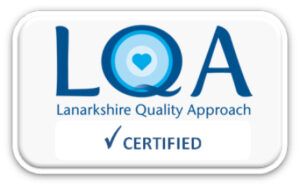Care of your body in pregnancy
Information for patients
NHS Lanarkshire Maternity Department
PIL.CAREBP.19_28185.W
This leaflet is designed to help you to reduce the strain on your body during pregnancy and make you more comfortable. It includes some gentle exercises and relaxation methods which you can practice from early pregnancy.
Caring for your Back in Pregnancy:
During pregnancy many women with healthy backs develop backache. This is due to hormonal and postural changes.
Your pelvis is made up of three bones and three joints. One of these joints is at the front and two are at your back. The bones form a protective cavity or basin for your bladder, womb and bowel. Your spine consists of many small bones (vertebrae). Ligaments and muscles support the joints of your spine and pelvis in order to give you stability and help maintain good posture.
Hormonal changes during pregnancy soften these ligaments. This can cause an increase in joint movement that can lead to aches and pains in your back and pelvis. The weight of your growing baby and changes in your posture can put further strain on your back.
Good posture in standing and sitting is important as it reduces the strain on our body.
Having Back or Pelvic Pain?
If you are having back or pelvic pain you can self refer to your local specialist physiotherapist.
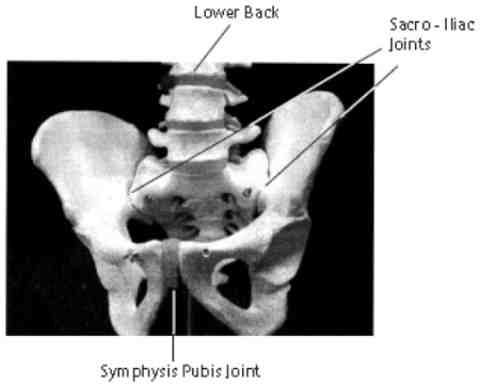
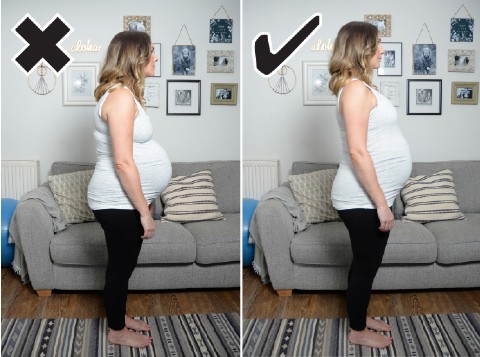
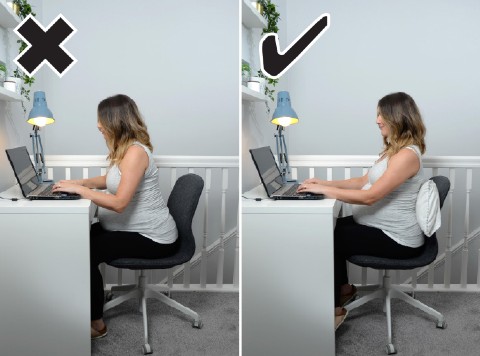
Lying on your Back in Pregnancy
In the early weeks of a normal healthy pregnancy, women should be reassured that resting, sleeping and exercising in any position they find comfortable is safe for them and their baby.
After 19 weeks you should only lie on your back for a short time and you should consider alternative positions particularly if you have been told of any complications in your pregnancy.
Do’s and Don’ts
The following pictures show examples of good and bad postures.
Sitting Positions



Lying Positions

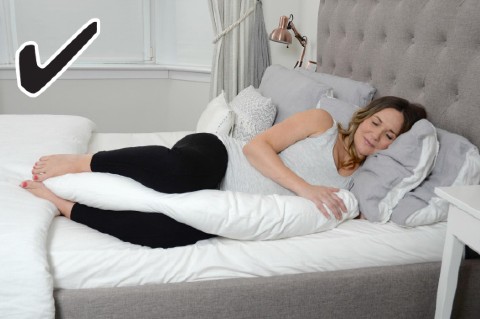
Getting out of bed





Lifting and Housework
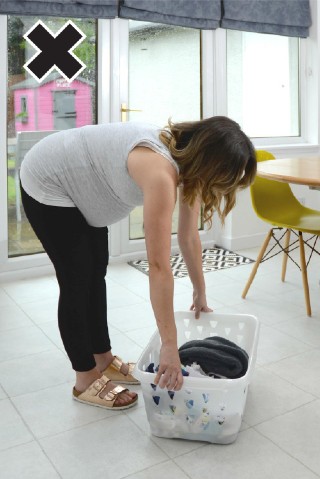
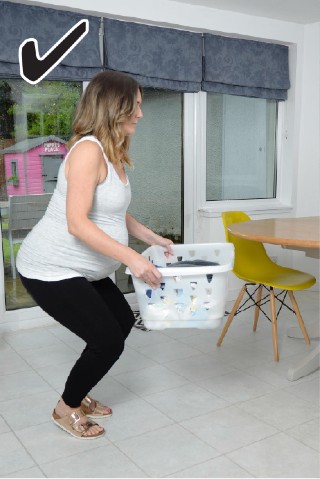
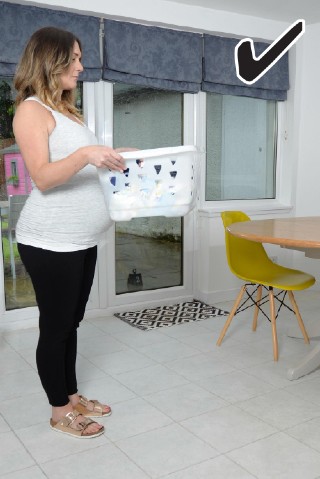


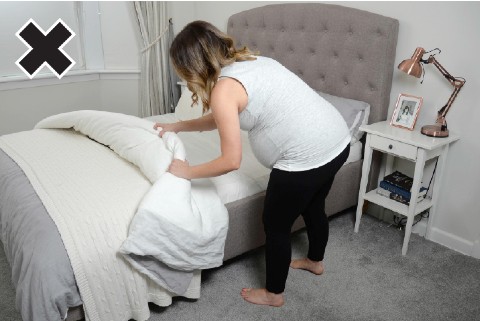

Abdominal Muscles
These muscles will stretch naturally as your baby grows and as a result they become weaker. You may notice a raised area “doming” in the middle of your tummy when moving in the bed or bath where these muscles have stretched. It is important to care for these muscles in order to support your back, your baby and to maintain good posture. Try to avoid or minimise movements that cause doming. You can reduce doming through good posture and rolling to get in and out of bed. Our bodies have a particular tummy muscle which acts like a corset to support you and your growing baby. We will call these your ‘deep tummy muscles’.
Abdominal muscle separation
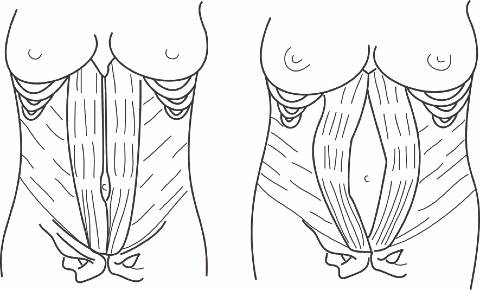
Deep Tummy Muscle Exercise
- Place your hand under your bump on the lower part of your tummy.
- Breathe in through your nose.
- As you breathe out, gently pull in your lower tummy muscles. Your tummy should pull away from your hand towards your lower back.
- Try to hold for a few seconds while breathing gently.
- Then relax.
- Start to build up your time as you feel your muscles get stronger until you can hold for up to 10 seconds. You should try to do this up to 10 times in total.
- Repeat this a few times every day.
Pelvic Floor Muscles
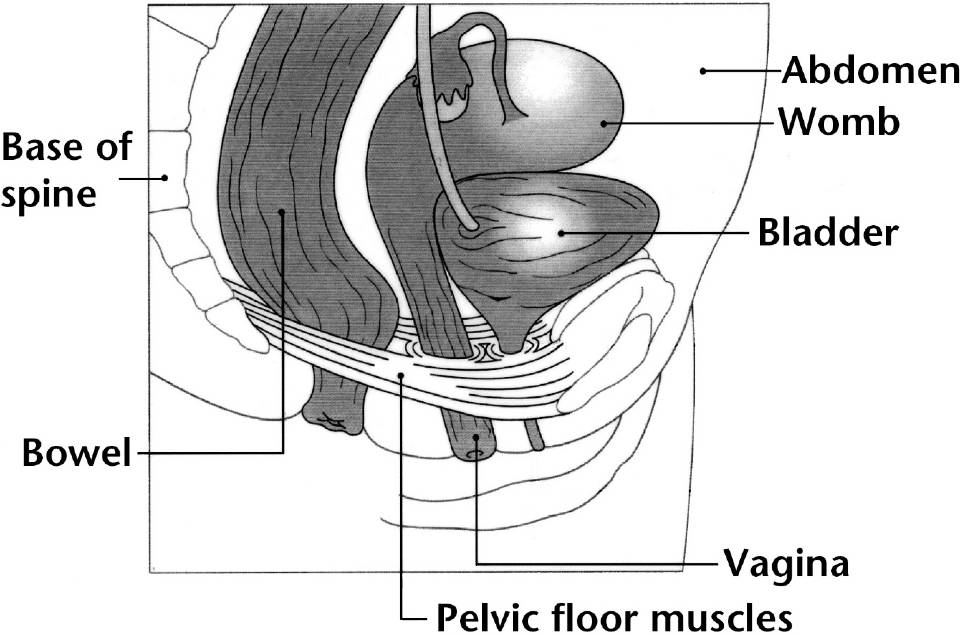
The pelvic floor forms a broad sling of muscles across the bottom of the pelvis, held in place by ligaments that support the pelvic organs, back and pelvic joints and your growing baby. The increasing weight of your baby during pregnancy, followed by the delivery, may weaken your pelvic floor muscles. This may lead to some pelvic floor problems such as:
- Reduced control of your bladder and bowel
- Reduced sensation and pleasure during sex
- Reduced support of the pelvic and back joints
- Increased risk of vaginal prolapse
Exercising the pelvic floor muscles during and after pregnancy can help to protect you from these problems, both in the short and long term.
Pelvic Floor Exercises Are For Life
Try and develop a daily pelvic floor muscle exercise routine.
Pelvic Floor Exercises
- Lie, sit or stand with your knees slightly apart.
- Imagine that you are trying to stop yourself from passing wind
and at the same time trying to stop your flow of urine. The feeling is one of ‘squeeze and lift’, closing and drawing up the front and back passages. This is called ‘a pelvic floor contraction’. - It’s important that you focus on the right group of muscles. You shouldn’t be working the muscles in your legs, clenching your buttocks or holding your breath when you do pelvic floor exercises. Feeling some slight tension in your lower abdomen (bikini line) is normal.
- Do not practice these exercises when passing urine as it may interfere with normal bladder emptying.
To strengthen your pelvic floor muscles you should do slow exercises as well as fast exercises.
Slow exercises
- Tighten your pelvic floor muscles, hold them tight, then release and let them fully relax. How long can you hold the squeeze?
- Repeat the squeeze and hold until your pelvic floor muscles tire. How many times can you repeat the squeeze?
- Aim to do 10 slow squeezes, holding each for 10 seconds.
Fast exercises
- Quickly tighten your pelvic floor muscles, then immediately let them go again. How many times can you do this fast squeeze before the muscles tire?
- Aim to do 10 fast squeezes.
- Always let the muscles fully relax after each squeeze.
You should aim to work the muscles until they tire and do the exercises regularly to help the muscles become stronger and more effective.
You should do your pelvic floor exercises at least 3 times a day.
You can tighten your pelvic floor muscles before sneezing, coughing and lifting to protect them from strain and urine leakage.
Try the NHS Squeezy APP for women – it is helpful in reminding you to do your pelvic floor exercises.
Having bladder or bowel control issues?
If you have problems with bladder or bowel control, you can self refer to your local specialist physiotherapist.
Exercise in Pregnancy
Mild to moderate exercise is good for you and your developing baby and most healthy women will find moderate exercise
beneficial during their pregnancy.
Every woman will have a different fitness level before they become pregnant and if you are used to exercising you can continue with your normal routine if you feel well.
Pregnancy can be a good opportunity to improve your overall fitness. If you are not used to exercising, you may wish to start with some low impact exercise or activities such as walking or swimming. You may wish to attend a specific pregnancy exercise class with a qualified specialist instructor for example aqua natal, antenatal yoga or antenatal pilates.
As your pregnancy progresses remember it is natural to slow down. You should avoid any activity which causes significant pain.
For more information on exercise in pregnancy read the Fit for Pregnancy PDF.
Exercises
Pelvic Tilting Exercises
The following pelvic tilting exercises may help to reduce your backache and improve your posture:
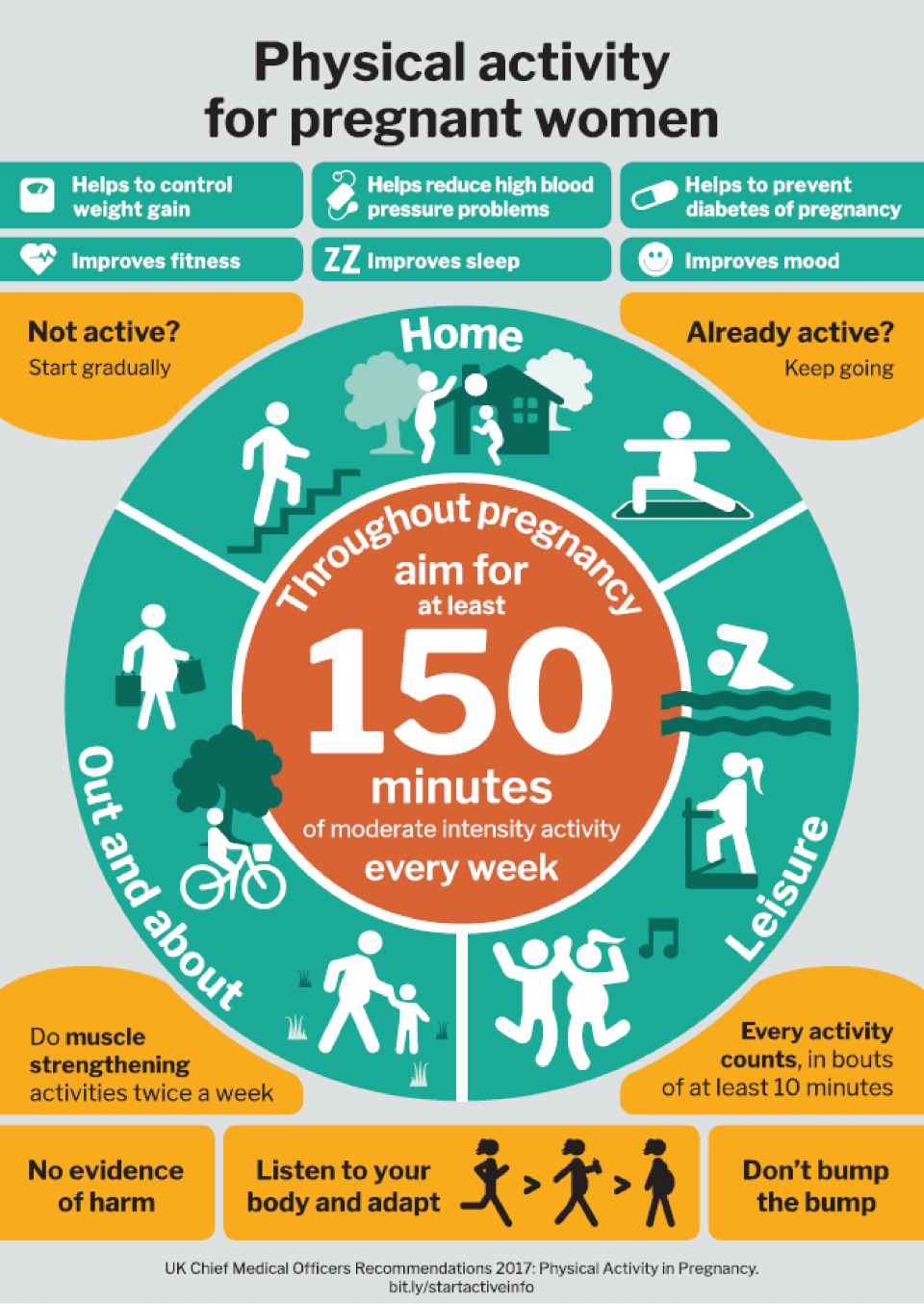
Exercise 1: Kneeling on all 4’s
- Get down on your hands and knees on the floor or bed.
- Tilt your tailbone towards the floor to arch your back like an angry cat, draw in your tummy as you do this.
- Hold for a few seconds, then slowly let go.
- Now tilt your tailbone back out to flatten your back.
- Repeat as able.
- You can do this exercise lying on your side.
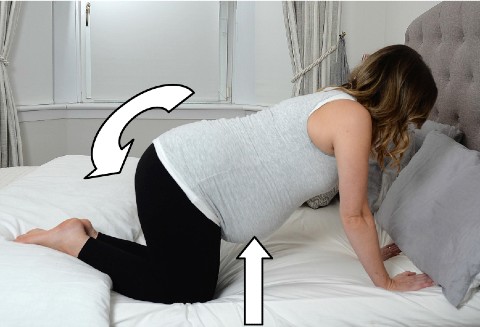
Exercise 2: Sitting on gym ball:
- Start by sitting straight on a gym ball with your feet flat on the floor.
- Think about ‘good posture’.
- Slouch into a slumped position, letting the gym ball roll with you, and then gently allow the ball to
roll with you back into the starting position. - Repeat as able.
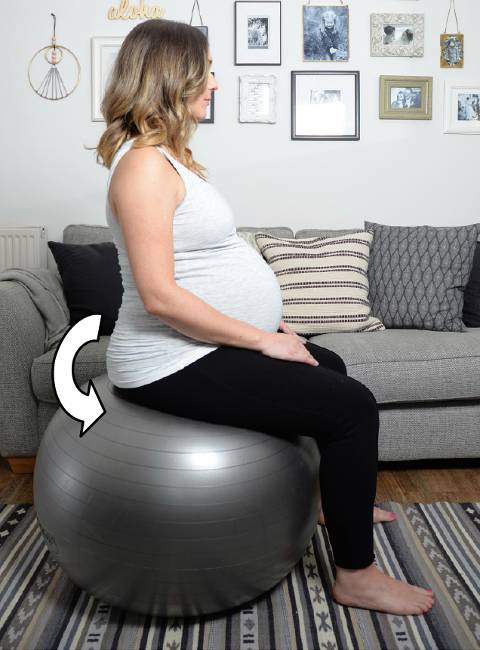
Other Pregnancy Problems
Cramp
This is due to changes in body chemistry and changing pressures in the abdomen.
Tips:
- Avoid high heeled shoes
- Avoid sitting cross-legged
- Massage the calf muscle(s)
Before going to bed, try these exercises:
Ankle pumps and circles
- 10 times each way quickly
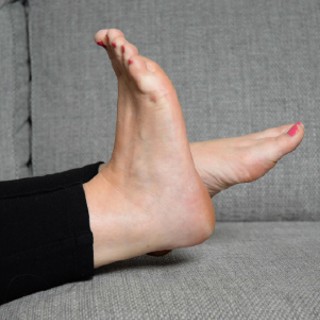
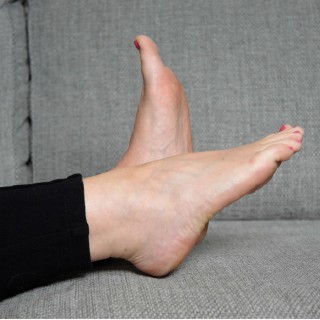
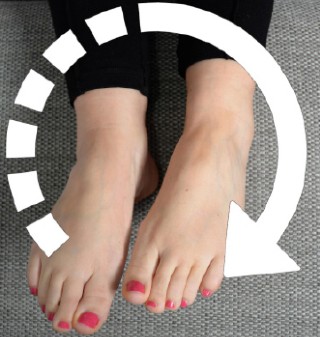
Calf stretches
- Try leaning against a wall hold the stretch for a few moments.
- Alternatively you can do a calf stretch in sitting with your leg straight and pull your toes up towards you
and hold for a few moments then release. - Repeat on both sides if required.
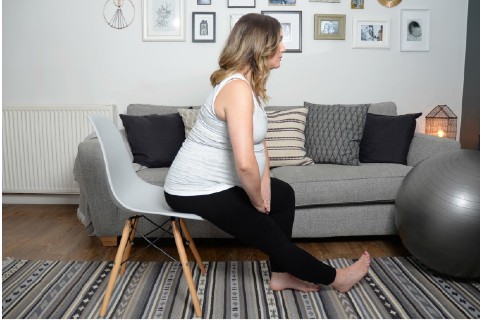
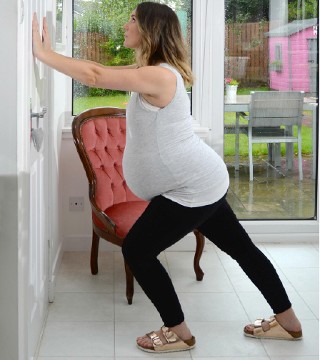
Swollen Ankles and Varicose Veins
Tips:
• Avoid sitting cross-legged
• Avoid standing for prolonged periods
• Consider trying support tights
• Try ankle pumps as previous page and repeat for 30 seconds or more at a time.
Numb Fingers or Wrist Pain
This is often a problem first thing in the morning and during the night and is due to extra fluid in the body, increasing the pressure at the wrist. Your physiotherapist will give you advice and may supply you with wrist supports to wear at night which may help solve the problem.
Please note: If you have swollen ankles and, or fingers along with a puffy face, headaches or flashing lights, get medical advice at once.
Rib flare
This is the name given to discomfort over your lower ribs. It is due to your growing baby pushing your ribs away from their normal position.
Tips:
• Try to change position frequently and avoid sitting on low chairs.
• You may get temporary relief by lifting the arm on the affected side and bending sideways away from the pain.
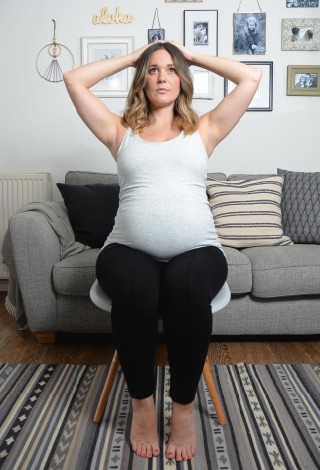
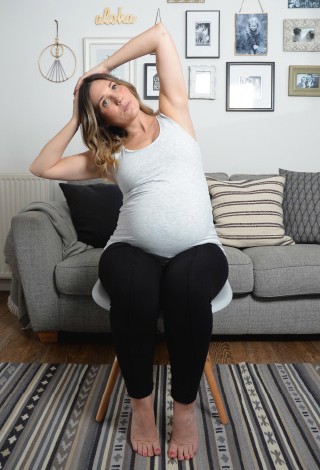
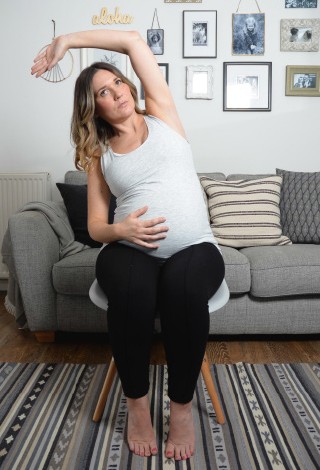
Round Ligament Pain
Round ligament pain is common in pregnancy. The round ligaments support your uterus and they stretch as your baby grows which can cause pain. This pain can be on either side of your lower abdomen and can feel like a stitch.
Tips to Ease Round Ligament Pain:
1. Change position regularly and rest if sore.
2. Move more slowly and support your abdomen when getting out of bed or up from a chair.
3. Support your abdomen when coughing or sneezing. Leaning forwards slightly and bending your knees up towards your abdomen may help.
4. Lie down on the opposite side of the pain.
5. A tubigrip or support belt may help. Your local physiotherapist may provide this.
7. Pelvic tilting exercises (see page 11 of this booklet).
8. A warm bath may help.
Please Note: Mention any abdominal pain to your midwife or doctor as any sudden onset abdominal pain needs investigated. Do not just assume it is round ligament pain.
Constipation
- Constipation is common in pregnancy due to hormonal changes.
- Constipation may cause you to strain when moving your bowels which can put pressure on your pelvic floor. In some cases this may cause piles (haemorrhoids).
- Sitting correctly on the toilet can reduce this strain making it easier to empty your bowels.
- Dehydration can also increase the risk of constipation so aim to drink at least 1.5 – 2 litres of fluid a day.
- Increasing your fibre intake may help.
- If you are struggling to manage your constipation speak to your GP or pharmacist who may suggest medication (laxatives).
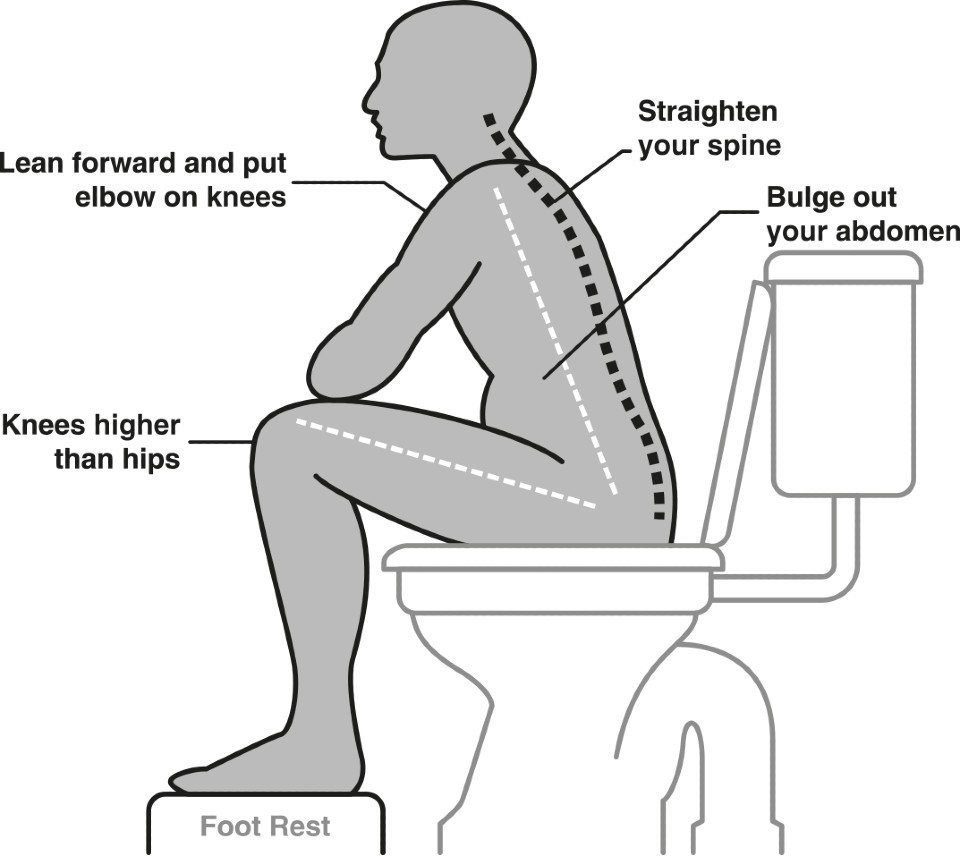
Emotional changes
The hormonal changes in pregnancy can lead to emotional ‘ups and downs’ and sometimes forgetfulness. These changes can effect how you feel and cope with your pregnancy. If you are concerned about these emotional changes speak to your midwife or GP.
Stress, Tension and Relaxation
Some people feel extremely tired and others develop aches and pains which may be related to tension.
Knowing how to prevent tension is a valuable life skill which is beneficial to you during your pregnancy.
- Learning a relaxation technique and using it regularly has been shown to reduce mildly increased blood pressure.
- Women who learn relaxation and use it in labour generally cope better with pain and feel more in control.
- During pregnancy, practising relaxation will help you to rest more effectively and can also help you get back to sleep again if you waken during the night.
- Try practicing relaxation at least once a day.
Resources
Useful Relaxation Resources:
www.ntw.nhs.uk/resource-library/relaxation-techniques/
This website contains audio files of relaxation techniques that can help relieve stress and gain a sense of well-being. Available in both male and female voices.
https://pogp.csp.org.uk/publications/mitchell-method-simple-relaxation
Other Useful Resources:
Pelvic Obstetric and Gynaecological Physiotherapy website
Try the NHS Squeezy APP for women – It is helpful in reminding you to do your pelvic floor exercises

Publication date: June 2022
Review date: June 2024
Issue Number:
Reference: PIL.CAREBP.19_28185.W
22_11967
If you need this information in another language or format, please e-mail:
